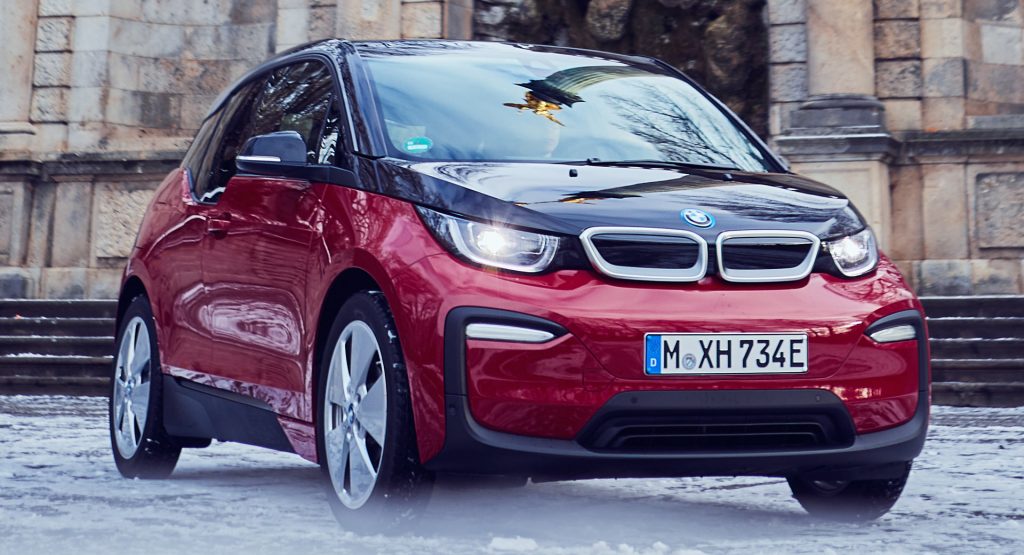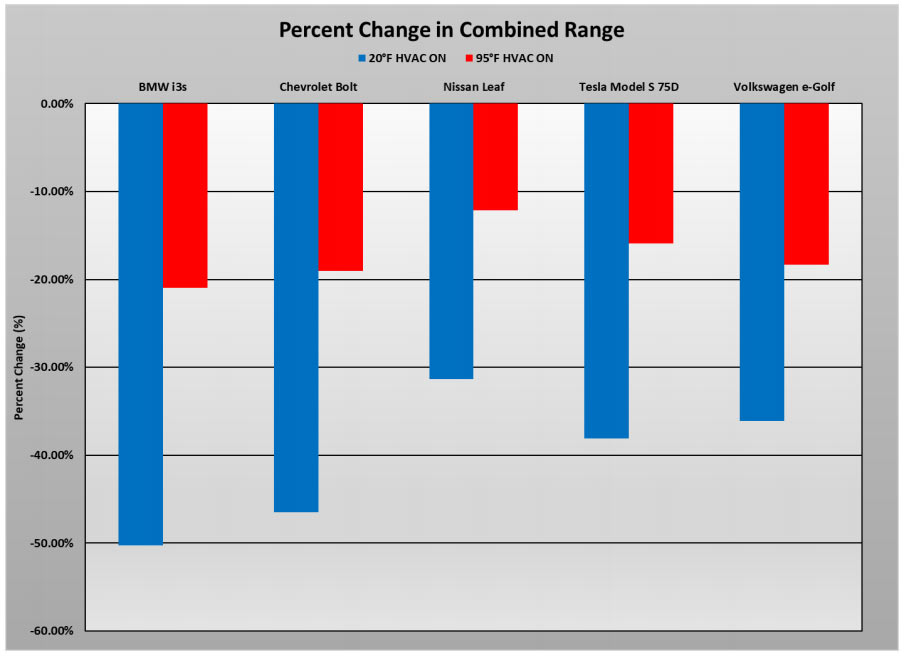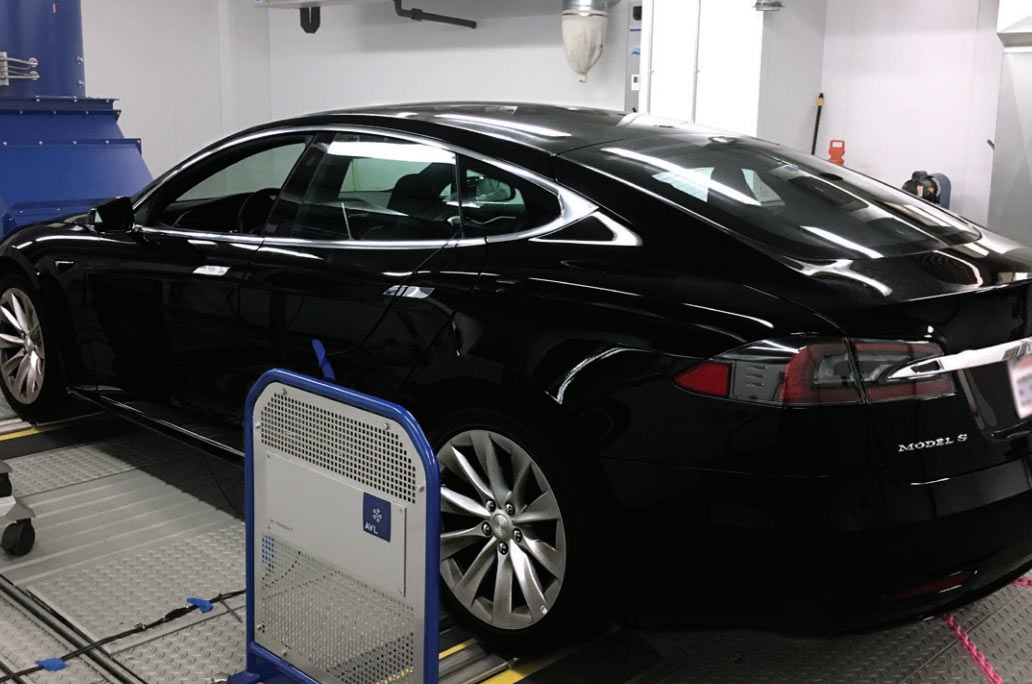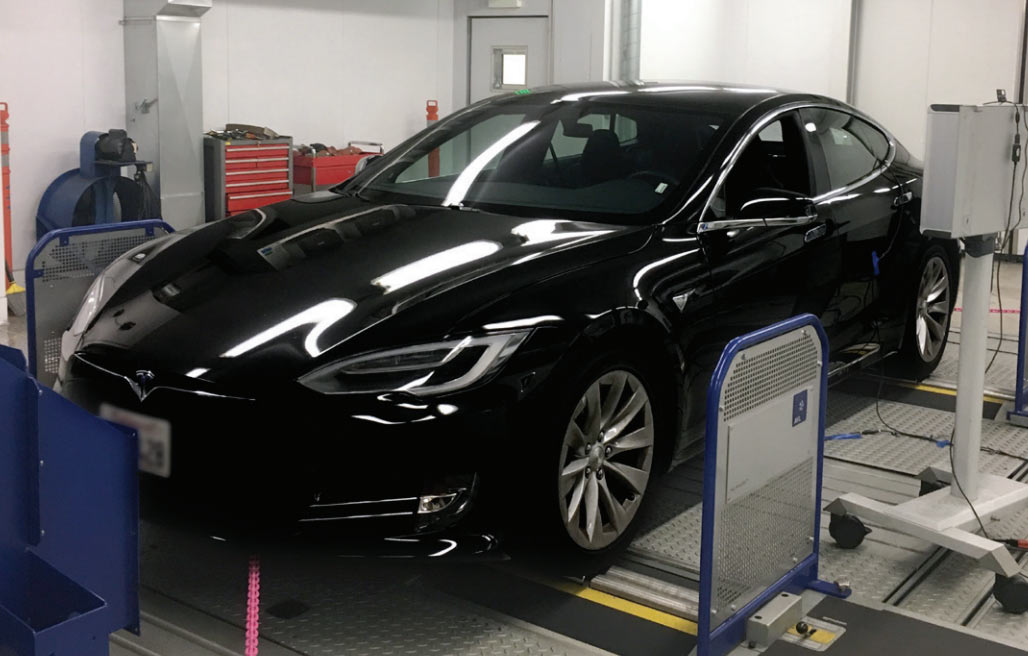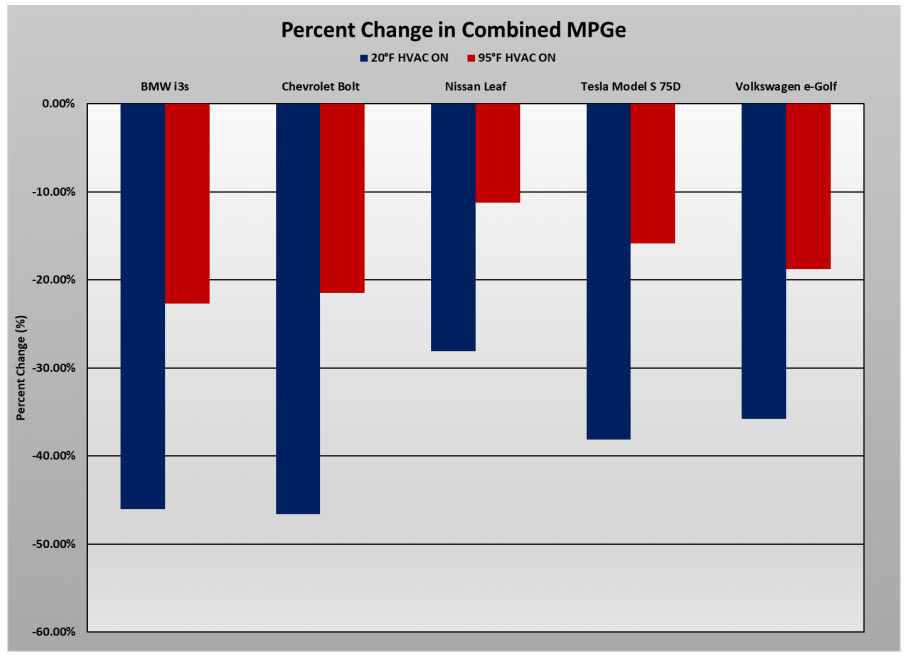A polar vortex recently gripped much of the Midwest, but even more modest temperatures can have a negative impact on the range of electric vehicles.
In a new study, AAA found that temperatures of 20° F (-6.6° C) can reduce the range of electric vehicles by an average of 41 percent. This is due to multiple factors, including the use of the climate control system to heat the cabin.
The study also found that cold weather has a greater impact on range than hot temperatures. When the mercury climbs to 95° F (35° C) and air conditioning is used to cool the interior, driving range decreases by an average of 17 percent.
The impacts on range are less dramatic when the climate control system is turned off. In 20° F (-6.6° C) temperatures, the range is reduced by 12 percent. At 95° F (35° C), the range drops by just four percent.
Since extreme temperatures affect the range of electric vehicles, drivers living in cold and hot climates can expect to recharge their EVs more often. According to the study, AAA found it costs an additional $24.27 (£18.72 / €21.37) to travel 1,000 miles when it’s 20° F (-6.6° C) and an extra $7.94 (£6.12 / €6.99) when it’s 95° F (35° C).
The test examined five different electric vehicles: the 2018 BMW i3s, 2018 Chevrolet Bolt, 2018 Nissan Leaf, 2017 Tesla Model S 75D and 2017 Volkswagen e-Golf.
It found that the BMW i3s performed the worst, as its range at 20° F (-6.6° C) with the climate control system on dropped by more than 50 percent. The i3s also performed the worst at 95° F (35° C) as its range fell by over 20 percent.
At the other end of the spectrum, the Nissan Leaf performed the best as it had the least range loses at both 20° F (-6.6° C) and 95° F (35° C) with the HVAC system on.
According to Megan McKernan, manager of the Automotive Club of Southern California’s Automotive Research Center, “The research clearly shows that electric vehicles thrive in more moderate climates, except the reality is most Americans live in an area where temperature fluctuates.” She went on to say, “Automakers are continually making advances to improve range, but with this information, drivers will be more aware of the impacts varying weather conditions can have on their electric vehicles.”




